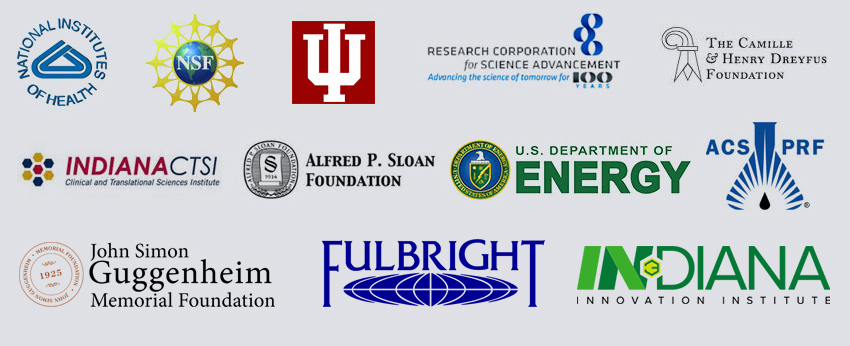Research
In addition to the research described below, group members are part of the Center for Single-Entity Nanochemistry and Nanocrystal Design, sponsored by the National Science Foundation through their Centers for Chemical Innovation Program. You can learn more about the Center at the link.
Nanomaterial Synthesis
Inorganic crystals with nanoscale dimensions are important functional materials and building blocks to larger devices. The properties of nanocrystals depend on physical parameters that include crystallite size, shape, composition, and architecture, and tremendous achievements have been made regarding the synthesis of structurally well-defined nanocrystals. Even with these advances, fundamental questions about nanocrystal formation remain and many materials have yet to be synthesized as high-quality nanoscale samples or using scalable technologies. We work to provide general synthetic routes to high-quality nanomaterials.
Please see the following manuscript to learn more about our research in this area.
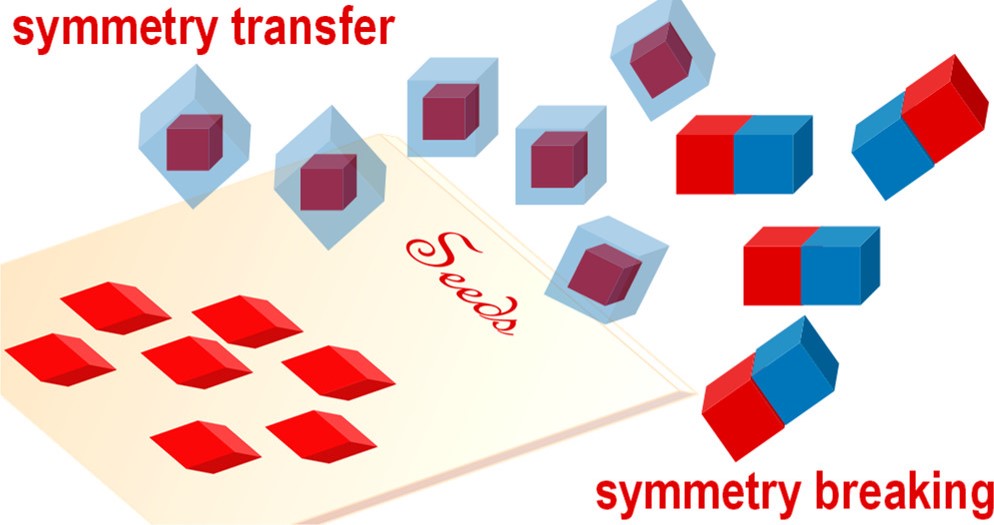
Symmetry in Seeded Metal Nanocrystal Growth
ARTICLE LINK Skrabalak, S. E.* "Symmetry in Seeded Metal Nanocrystal Growth" Accounts of Materials Research (invited manuscript, Editor's Choice Manuscript), 2021, 2, 621-629. DOI: 10.1021/accountsmr.1c00077.
Applications of Metal Nanomaterials: Sensing, Catalysis, and Security
Metal nanomaterials show interesting properties that depend on particle size, shape, and composition. We use our synthetic methods to achieve novel metal nanostructures and then study how their composition and structure contribute to their properties for applications in chemical sensing, fuel cell electrocatalysis, and secured electronics.
Please see the following manuscripts to learn more about our research in this area.
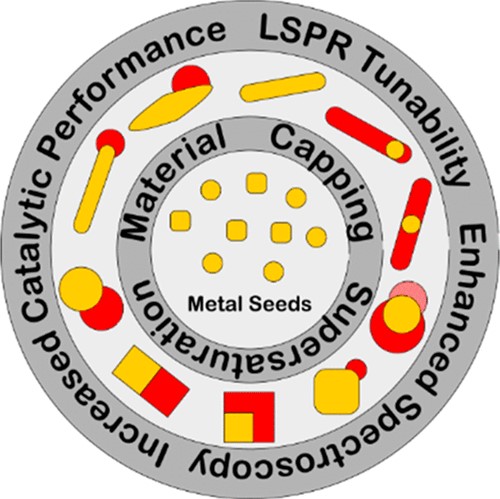
Symmetry-Reduced Metal Nanostructures Offer New Opportunities in Plasmonics and Catalysis
ARTICLE LINK Woessner, Z. J.; Skrabalak, S. E.* "Symmetry-Reduced Metal Nanostructures Offer New Opportunities in Plasmonics and Catalysis" J. Phys. Chem. C, 2021, 125, 23587-23596. DOI: 10.1021/acs.jpcc.1c07743.
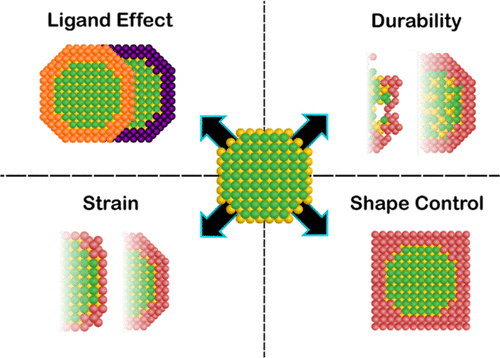
Building Durable Multimetallic Electrocatalysts from Intermetallic Seeds
ARTICLE LINK Bueno, S. L. A.; Ashberry, H. M.; Shafei, I.; Skrabalak, S. E.* "Building Durable Multimetallic Electrocatalysts from Intermetallic Seeds" Accounts of Chemical Research, 2021, 54, 1662-1672. DOI: 10.1021/acs.accounts.0c00655.
Solar-to-Fuel Conversion
Local structure, nanoscale structure, and macroscale structure contribute to the properties of materials for solar-to-fuel conversion processes. We are currently studying durable metal heteroanionic materials as visible light absorbing photocatalysts for solar water splitting.
Please see the following manuscript to learn more about our research in this area.
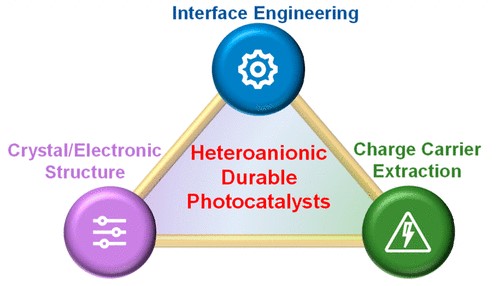
Durable Metal Heteroanionic Photocatalysts
ARTICLE LINK Chatterjee, K.; Skrabalak, S. E.* "Durable Metal Heteroanionic Photocatalysts" ACS Applied Materials & Interfaces (invited Perspective), 2021, in press. DOI: 10.1021/acsami.1c09774.


